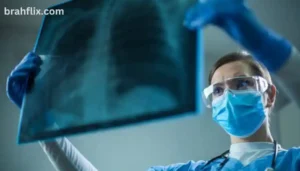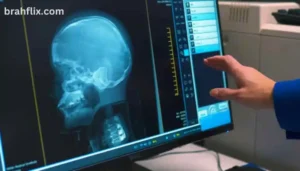Introduction
Are you interested in pursuing a career as an X-ray technician? This comprehensive guide will walk you through the essential steps and considerations on how to become an X-ray tech, from educational requirements to job responsibilities and career prospects. X-ray technicians, also known as radiologic technologists, play a crucial role in the medical field by using imaging technology to diagnose and treat patients. With the growing demand for healthcare professionals, becoming an X-ray tech offers a stable and rewarding career path.
Key Takeaways
- Educational Requirements: Learn about the necessary degrees and certifications needed.
- Job Responsibilities: Understand the day-to-day duties of an X-ray tech.
- Career Prospects: Explore the job market and growth opportunities.
- Skills Needed: Discover the essential skills and attributes for success in this field.
1. Understanding the Role of an X-Ray Technician
X-ray technicians, or radiologic technologists, are healthcare professionals trained to perform diagnostic imaging procedures. They operate X-ray machines to capture images of the body, which help doctors diagnose and monitor various medical conditions. Here’s a closer look at what the job entails:
Responsibilities of an X-Ray Tech
- Performing Imaging Procedures: Operate X-ray machines and other imaging devices to obtain diagnostic images.
- Patient Care: Explain procedures to patients, ensure their comfort, and position them correctly for imaging.
- Image Analysis: Review images for clarity and accuracy before sending them to physicians for evaluation.
- Equipment Maintenance: Perform routine checks and maintenance on imaging equipment.
- Record Keeping: Maintain detailed records of patient imaging procedures and results.
Skills Required:
- Technical Proficiency: Understanding of imaging technology and techniques.
- Communication Skills: Ability to explain procedures to patients and work effectively with medical staff.
- Attention to Detail: Ensuring accurate image capture and patient positioning.
- Problem-Solving Abilities: Addressing any issues that arise during imaging procedures.
2. Educational Pathway: How to Become an X-Ray Tech
To embark on a career as an X-ray tech, you’ll need to follow a specific educational and training path. Here’s a step-by-step guide:
Step 1: Obtain a High School Diploma or GED
A high school diploma or GED is the foundational requirement for entering a radiologic technology program. Focus on courses in science and mathematics to prepare for advanced studies.
Step 2: Enroll in a Radiologic Technology Program
Accredited Radiologic Technology Programs:
- Associate Degree: Most X-ray techs earn an Associate of Applied Science (AAS) in Radiologic Technology. This typically takes 2 years to complete and includes both classroom instruction and clinical practice.
- Bachelor’s Degree: Some may opt for a Bachelor’s degree, which offers a broader range of knowledge and can lead to advanced career opportunities.
Program Components:
- Classroom Instruction: Subjects include anatomy, patient care, radiation physics, and radiographic procedures.
- Clinical Experience: Hands-on training in a healthcare setting to gain practical experience.
Step 3: Obtain Certification and Licensure
- Certification: After completing your program, you need to pass the national certification exam administered by the American Registry of Radiologic Technologists (ARRT).
- Licensure: Most states require licensure to practice as an X-ray tech. Check specific state requirements for licensure.
Certification Tips:
- Prepare Thoroughly: Use study guides and practice exams to prepare for the certification test.
- Stay Informed: Keep up-to-date with continuing education requirements to maintain certification.
Step 4: Pursue Continuing Education and Specializations
To advance your career and stay current in the field, consider pursuing additional certifications in specialized areas such as MRI, CT scanning, or mammography. Continuing education can also lead to roles in education, administration, or advanced clinical practice.
3. Career Outlook and Opportunities for X-Ray Technicians
The demand for X-ray technicians is expected to grow significantly. According to the U.S. Bureau of Labor Statistics, employment for radiologic technologists is projected to grow by 7% from 2021 to 2031, faster than the average for all occupations.
Job Market Trends
- Growing Demand: The increasing aging population and advances in medical imaging technology are driving demand.
- Diverse Work Environments: X-ray techs can work in hospitals, diagnostic imaging centers, physician’s offices, and even mobile imaging units.
Career Advancement Opportunities
- Specializations: Opportunities to specialize in areas such as computed tomography (CT), magnetic resonance imaging (MRI), or mammography.
- Leadership Roles: With experience, you can move into management or supervisory positions.
- Education and Training: Become an instructor or clinical educator for aspiring X-ray techs.
4. Essential Skills and Personal Attributes for Success
To excel as an X-ray tech, certain skills and personal attributes are crucial:
Technical Skills
- Radiographic Techniques: Proficiency in operating imaging equipment and understanding radiographic techniques.
- Patient Safety: Knowledge of radiation safety protocols and procedures.
Interpersonal Skills
- Empathy and Communication: Ability to communicate effectively with patients and provide compassionate care.
- Team Collaboration: Working well with healthcare teams and other professionals.
Attention to Detail
- Precision in Imaging: Ensuring images are of high quality and accurately positioned.
- Detail-Oriented Documentation: Maintaining accurate patient records and imaging results.
5. The Importance of Patient Interaction
Patient interaction is a key component of the X-ray tech role. Building rapport and ensuring patient comfort are essential for successful imaging procedures. Here are some tips for effective patient interaction:
Building Rapport with Patients
- Clear Communication: Explain procedures clearly and answer any questions patients may have.
- Comfort and Reassurance: Make patients feel at ease and address any anxieties they may have about the procedure.
Handling Difficult Situations
- Dealing with Anxiety: Provide support and reassurance to patients who are nervous about imaging procedures.
- Managing Emergencies: Be prepared to handle medical emergencies and provide appropriate care.
6. Financial Considerations and Salary Expectations
The financial aspects of a career as an X-ray tech are an important consideration. Here’s what you need to know:
Salary Range
- Median Salary: As of 2023, the median annual wage for radiologic technologists in the United States is approximately $64,000.
- Salary Variations: Salaries can vary based on location, experience, and specialization.
Cost of Education
- Program Costs: Tuition for radiologic technology programs can range from $5,000 to $30,000, depending on the institution and program length.
- Financial Aid: Explore scholarships, grants, and student loans to help cover educational expenses.
Return on Investment
- Job Stability: With a growing job market and competitive salaries, a career as an X-ray tech offers a strong return on investment for educational expenses.
7. Challenges and Rewards of the X-Ray Tech Profession
Like any profession, being an X-ray tech comes with its own set of challenges and rewards.
Challenges
- Physical Demands: The job can be physically demanding, requiring long hours of standing and handling equipment.
- Emotional Stress: Dealing with patients who may be in distress or experiencing severe health issues.
Rewards
- Job Satisfaction: Helping patients and contributing to their care provides a deep sense of fulfillment.
- Career Growth: Opportunities for specialization and advancement in the field.
8. How to Prepare for the Certification Exam
Successfully passing the certification exam is a critical step in becoming a licensed X-ray tech. Here’s how to prepare effectively:
Study Resources
- Textbooks and Study Guides: Utilize recommended textbooks and study guides specific to the ARRT exam.
- Practice Exams: Take practice exams to familiarize yourself with the test format and types of questions.
Study Tips
- Create a Study Plan: Develop a structured study schedule to cover all exam topics.
- Join Study Groups: Collaborate with peers to review material and share insights.
Test Day Preparation
- Rest Well: Ensure you are well-rested and prepared on the day of the exam.
- Arrive Early: Arrive at the testing center early to complete any necessary paperwork and settle in.
9. Navigating the Job Market: Finding Employment as an X-Ray Tech
Securing a position as an X-ray tech requires effective job search strategies. Here’s how to navigate the job market:
Job Search Strategies
- Networking: Connect with professionals in the field through industry events, conferences, and social media.
- Online Job Boards: Use job search websites and platforms to find job openings in your area.
Application Tips
- Resume and Cover Letter: Tailor your resume and cover letter to highlight relevant skills and experience.
- Interview Preparation: Prepare for interviews by practicing common questions and scenarios related to the role.
FAQs About Becoming an X-Ray Tech
1. What educational background is needed to become an X-ray tech?
You need an Associate’s degree in Radiologic Technology, which takes about two years, or a Bachelor’s degree for advanced opportunities.
2. How long does it take to complete X-ray tech training?
Typically, it takes around 2 years for an Associate’s degree program, or 4 years for a Bachelor’s degree.
3. What certifications are required to work as an X-ray tech?
You must pass the ARRT certification exam and obtain state-specific licensure to practice.
4. What skills are essential for an X-ray tech?
Key skills include technical proficiency with imaging equipment, attention to detail, strong communication abilities, and problem-solving skills.
5. What are the job prospects for X-ray techs?
Job prospects are strong with a projected growth rate of 7% from 2021 to 2031, driven by an aging population and advancements in imaging technology.
6. Can I specialize in areas other than X-ray technology?
Yes, you can specialize in fields like CT, MRI, mammography, or interventional radiology, often requiring additional training and certification.
7. What are the typical working conditions for X-ray techs?
X-ray techs work in hospitals, imaging centers, and medical offices, with physical demands and potentially irregular hours.
8. How much can an X-ray tech expect to earn?
The median annual salary is approximately $64,000, with variations based on location, experience, and specialization.
9. What continuing education requirements are there for X-ray techs?
You need to complete continuing education credits every two years to maintain certification.
10. How can I find job opportunities as an X-ray tech?
Use online job boards, attend industry events, network with professionals, and seek assistance from educational program placement services.
Conclusion
Becoming an X-ray tech involves a structured educational path, certification, and ongoing professional development. With a growing job market and diverse career opportunities, this profession offers a stable and rewarding career in healthcare. Whether you’re drawn to the technical aspects, patient interaction, or career advancement possibilities, being an X-ray tech can be a fulfilling choice.
Are you considering a career as an X-ray tech? What aspect of the profession excites you the most? If you’re interested in exploring other healthcare careers or learning more about radiologic technology, be sure to check out our other informative blogs!